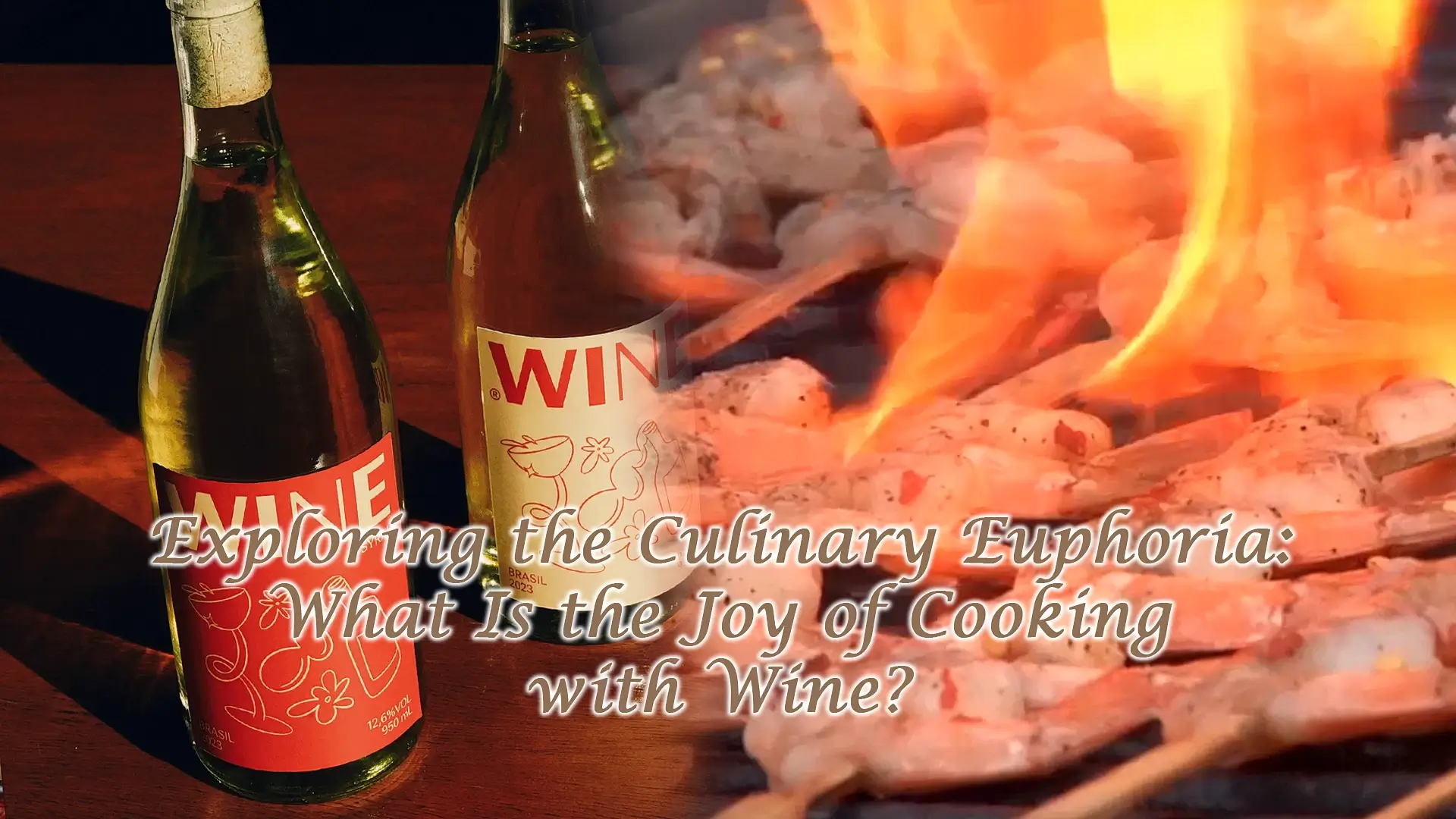Exploring the Culinary Euphoria: What Is the Joy of Cooking with Wine?
When it comes to culinary adventures, one ingredient that has stood the test of time and continues to captivate chefs and home cooks alike is wine. Beyond being a delightful beverage to savor, wine has found its place in the heart of the kitchen, bringing a unique and unparalleled joy to the art of cooking. In this exploration, we unravel the mysteries behind the joy of cooking with wine, discovering the depth of flavors, aromas, and techniques that make it an essential element in the culinary world.
Understanding the Basics: What is the Joy of Cooking with Wine?
Cooking with wine involves using this versatile liquid in various culinary applications, from sauces and marinades to stews and desserts. The joy of cooking with wine lies in the way it enhances and complements the flavors of dishes, adding complexity, depth, and richness. Whether it’s a red, white, or even a splash of fortified wine, the right choice can elevate a dish from ordinary to extraordinary.
Unlocking Flavor Profiles: The Magic of Wine in Cooking
One of the primary reasons behind the joy of cooking with wine is its ability to impart a diverse range of flavors to dishes. The complex blend of sugars, acids, and alcohol in wine interacts with the other ingredients, creating a symphony of tastes that tantalize the taste buds. Red wines, for example, often bring robust, deep flavors to hearty dishes like beef stew, while white wines contribute brightness and acidity to seafood and poultry.
The joy also lies in the art of selecting the right wine for a specific dish. The flavors in the wine should complement and enhance the flavors in the food. For instance, a rich Cabernet Sauvignon might pair beautifully with a savory beef bourguignon, while a crisp Sauvignon Blanc can add a refreshing touch to a lemon-infused seafood pasta.

Aromas That Dance: The Nose Knows the Joy of Cooking with Wine
Wine doesn’t just tantalize the taste buds; it also engages the sense of smell, playing a crucial role in the joy of cooking. As wine simmers in a sauce or marinade, its aromatic compounds are released, infusing the entire kitchen with a delightful bouquet. The fragrant notes of fruits, spices, and herbs present in the wine create a sensory experience that adds an extra layer of pleasure to the cooking process.
Imagine the joy of cooking a classic coq au vin, where the air is filled with the heady aroma of red wine, mingling with the earthiness of mushrooms and the savory goodness of braised chicken. It’s a culinary symphony that begins with the simple act of pouring wine into the pot.
Tenderizing and Transforming: The Culinary Alchemy of Wine
Beyond its flavor and aroma, wine plays a transformative role in cooking, acting as a natural tenderizer for meats and imparting a luscious texture to sauces. The acid in wine helps break down proteins in meat, resulting in dishes that are not only flavorful but also incredibly tender.
In addition to tenderizing, wine has the power to transform and deepen the color of dishes. A splash of red wine can turn a basic tomato sauce into a rich, burgundy masterpiece, while white wine can lend a golden hue to creamy sauces. This visual aspect adds to the joy of cooking with wine, making the culinary experience both visually appealing and gastronomically satisfying.
Cooking Wine Etiquette: When and How to Use It
To fully embrace the joy of cooking with wine, it’s essential to understand when and how to use it in various recipes. While some dishes benefit from the boldness of red wine, others shine with the brightness of white. Here are a few pointers to keep in mind:
- Red Wine: Ideal for hearty dishes like stews, braises, and red meat-based dishes. Merlot, Cabernet Sauvignon, and Pinot Noir are popular choices.
- White Wine: Perfect for lighter dishes such as seafood, poultry, and creamy sauces. Sauvignon Blanc, Chardonnay, and Pinot Grigio work well.
- Fortified Wine: Sherry, Marsala, and Port can add depth and complexity to sauces and desserts.
- Cooking Techniques: Add wine early in the cooking process to allow it to reduce and meld with other flavors. Avoid using poor-quality wine, as its flaws can be intensified during cooking.
The Joy in a Glass: Cooking with Wine for Pleasure
The joy of cooking with wine extends beyond the kitchen, as it brings people together in celebration of good food, good company, and the pleasures of life. Whether it’s a cozy family dinner or a festive gathering of friends, a meal prepared with wine reflects the spirit of enjoyment and conviviality.
As you embark on your culinary journey, embrace the joy of cooking with wine as a celebration of flavors, aromas, and the art of transforming simple ingredients into extraordinary dishes. Experiment with different wines, trust your palate, and let the joy of cooking with wine become a cherished tradition in your kitchen.
And so
The joy of cooking with wine is a delightful fusion of science, art, and passion. It’s about unlocking the hidden potential in each bottle, letting it weave its magic in your dishes, and sharing the resulting culinary symphony with those you hold dear. So, the next time you raise a glass to toast a delicious meal, remember the joy that wine brings to your kitchen and savor the rich experience it adds to the tapestry of your culinary adventures. Cheers to the joy of cooking with wine!




The inclusion of recipes showcasing the versatility of cooking with wine is a fantastic addition
I appreciate how the article addresses the common misconceptions about cooking with wine, debunking myths and offering guidance on choosing the right wine for various dishes.
The section on pairing wine with different cuisines is particularly insightful.
I not like wine, more like beeeeerrr
Pingback: Wine Pairing Tips For Holiday Entertaining - Magazine4You